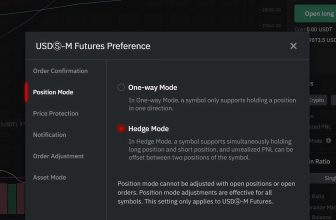Financial markets are complex systems where various instruments, such as stocks, bonds, and derivatives, are bought and sold. Trading strategies play a crucial role in navigating these markets and maximizing profits. In recent years, automation has emerged as a powerful tool to execute trading strategies efficiently and effectively. This article explores different trading strategies in financial markets and examines the possibility of automating them using robots.
Unpacking the Complexity of Financial Markets
Before delving into trading strategies, it is essential to understand the complexity of financial markets. Many factors influence these markets, including economic indicators, geopolitical events, and investor sentiment. Traders must analyze and interpret these factors to make informed decisions and execute profitable trades.
The Evolution and Importance of Trading Strategies
Trading strategies have evolved significantly over the years. Initially, traders relied on manual methods and intuition to make trading decisions. However, systematic trading strategies have gained popularity with technological advancements and the availability of vast amounts of market data.
Trading strategies serve as a roadmap for traders, providing them with a structured approach to identifying opportunities, managing risks, and executing trades. These strategies are developed based on technical analysis, fundamental analysis, and market indicators.
Scalping
Understanding Scalping in Trading
Scalping is a short-term trading strategy where traders aim to profit from small price movements. Scalpers execute numerous trades throughout the day, holding positions briefly, sometimes just a few seconds or minutes. This strategy requires quick decision-making and efficient trade execution.
How Robots Aid in Scalping
Robots, also known as algorithmic trading systems or trading bots, have revolutionized scalping. These automated systems can analyze market data, identify price patterns, and execute trades quickly. Robots can monitor multiple markets simultaneously, allowing scalpers to capitalize on even the slightest price fluctuations.
Day Trading
The Mechanism of Day Trading
Day trading involves buying and selling financial instruments within the same trading day, with no positions held overnight. Day traders aim to capitalize on short-term price movements, leveraging technical analysis and market indicators. This strategy requires discipline, risk management, and the ability to make quick decisions.
How Robots Facilitate Day Trading
Robots have become invaluable tools for day traders. These automated systems can continuously monitor the market, identify trading opportunities, and execute trades in real time. With the ability to process vast amounts of data and implement complex algorithms, robots can effectively analyze price patterns and indicators, assisting day traders in making profitable trades.
Swing Trading
The Concept and Practices of Swing Trading
Swing trading is a medium-term strategy aiming to capture short-to-medium-term price trends. Swing traders hold positions for several days to weeks, profiting from price swings within the broader trend. This strategy combines technical analysis, chart patterns, and market sentiment.
Swing Trading with the Help of Trading Robots
Trading robots can significantly enhance swing trading strategies. These automated systems can scan multiple markets, analyze historical data, and identify potential swing trading opportunities. Robots can execute trades based on predefined criteria, such as specific price patterns or indicators, allowing swing traders to efficiently take advantage of profitable trends.
Trend Following
The Principle of Trend Following
Trend following is a strategy that aims to profit from the continuation of established price trends. Traders using this strategy identify upward or downward trends and enter positions in the direction of the trend. Trend followers rely on technical indicators and market momentum to make trading decisions.
Role of Robots in Trend-Following Trades
Robots are well-suited for trend-following strategies. These automated systems can continuously monitor price movements, identify trends, and generate trading signals. By leveraging advanced algorithms and machine learning techniques, robots can identify and adapt to changing trends more effectively than manual traders. They can execute trades promptly and without emotional bias, maximizing the potential profits from trend-following strategies.
News Trading
Decoding News Trading and its Relevance
News trading involves trading financial instruments based on releasing significant news events and economic indicators. Traders analyze the impact of news on the market and take positions accordingly. News trading requires quick decision-making and interpreting and reacting to the news in real-time.
News Trading Automation: Is It Feasible?
Automating news trading poses challenges due to the unpredictable nature of news events and the need for real-time analysis. While robots can assist in news data aggregation and processing, interpreting the context and sentiment of news remains a complex task. However, advancements in natural language processing and sentiment analysis make news trading automation more feasible.
Algorithmic Trading
Unfolding Algorithmic Trading and its Processes
Algorithmic trading refers to the use of pre-programmed instructions to execute trades automatically. These instructions, often based on complex mathematical models and trading algorithms, help traders automate various aspects of the trading process. Algorithmic trading aims to reduce human error, improve trade execution speed, and capitalize on market inefficiencies.
The Synergy Between Algorithmic Trading and Robots
Trading robots play a pivotal role in algorithmic trading. They execute trades based on predefined algorithms and strategies, exploiting market conditions and opportunities. Robots can analyze vast amounts of data, identify patterns, and execute trades with precision and speed, making them indispensable in algorithmic trading.
Pattern Trading
Pattern Trading: Spotting the Market Trends
Pattern trading involves identifying recurring price patterns and using them to predict future price movements. Traders analyze chart patterns, such as head and shoulders, triangles, or double tops, to identify potential trend reversals or continuation patterns. Pattern trading relies on technical analysis and historical price patterns.
The Potential for Automation in Pattern Trading
Automation can greatly enhance pattern trading strategies. Trading robots can scan multiple markets simultaneously, analyze historical price data, and identify specific patterns. By automating the process of pattern recognition and trade execution, robots can help traders capitalize on pattern-based trading opportunities more efficiently.
Reversal Trading
Reversal Trading and its Tactics
Reversal trading is a strategy that aims to identify potential trend reversals and profit from them. Traders look for signs of a trend losing momentum or reaching a significant resistance or support level. Reversal traders enter positions opposite to the prevailing trend, anticipating a reversal and subsequent price movement in the opposite direction.
Automated Reversal Trading: Prospects and Challenges
Automating reversal trading strategies can be challenging due to the subjective nature of identifying reversals and the need for accurate timing. However, robots can assist in scanning multiple instruments, monitoring price movements, and executing trades based on predefined reversal criteria. With proper configuration and robust algorithms, automation can enhance the efficiency and accuracy of reversal trading.
Simultaneous Trading
Exploring Simultaneous Trading and its Techniques
Simultaneous trading, or multi-asset or cross-asset trading, involves trading multiple financial instruments simultaneously. Traders diversify their portfolios and exploit correlations and arbitrage opportunities across different markets or asset classes. Simultaneous trading requires careful risk management and the ability to monitor and execute trades across multiple instruments.
Can Robots Manage Simultaneous Trading?
Robots excel in managing simultaneous trading strategies. With their ability to process vast amounts of data and execute trades across multiple markets in real time, robots can identify correlations, monitor price differentials, and execute trades efficiently. By automating simultaneous trading, traders can capitalize on market inefficiencies and maximize their profit potential.
Dynamic Trading
The Fundamentals of Dynamic Trading
Dynamic trading involves adapting trading strategies based on changing market conditions. Traders continuously monitor market trends, volatility, and other indicators to adjust their positions and trading strategies accordingly. Dynamic traders aim to capture opportunities presented by evolving market dynamics and adjust their risk exposure accordingly.
Automation in Dynamic Trading: How Does it Work?
Automation plays a crucial role in dynamic trading. Trading robots can monitor market conditions in real time, analyze indicators, and adjust trading parameters accordingly. They can swiftly adapt to changing market dynamics and execute trades based on predefined rules and algorithms. Automation enables dynamic traders to respond quickly to market shifts and seize profitable opportunities without delay.
Night Trading
Understanding the Uniqueness of Night Trading
Night trading refers to activities outside regular trading hours, typically during overnight sessions. Different global markets operate during different time zones, creating opportunities for night trading. Traders use price movements and volatility during these sessions to execute trades.
The Role of Robots in Night Trading
Robots are particularly valuable in night trading because they operate continuously and monitor multiple markets simultaneously. While traders sleep, robots can analyze price data, execute trades based on predefined strategies, and capture opportunities in global markets. Robots ensure that night trading is not limited by time zones or human limitations, maximizing the potential for profitable trades.
Exit Trading
Exit Trading: Knowing When to Fold
Exit trading refers to the process of closing out positions and exiting trades. Proper exit strategies are crucial for managing risk and maximizing profits. Traders use indicators such as stop-loss orders, trailing stops, or profit targets to determine optimal exit points based on their trading strategies and risk tolerance.
Automation Opportunities in Exit Trading
Automation offers significant advantages in exit trading. Trading robots can monitor positions in real-time, analyze market conditions, and execute exit orders based on predefined criteria. By automating exit strategies, traders can ensure consistent and disciplined trade management, eliminating emotional biases and maximizing profits.
Arbitrage Trading
Arbitrage Trading: The Game of Differences
Arbitrage trading involves exploiting price discrepancies between different markets or instruments to generate profits. Traders identify price differentials and execute simultaneous buy and sell orders to capture the price spread. Arbitrage trading requires speed, precision, and efficient trade execution.
The Potential of Robots in Arbitrage Trading
Robots are ideally suited for arbitrage trading strategies due to their speed and ability to process vast amounts of data. They can scan multiple markets, analyze price differences, and execute trades instantaneously. By automating arbitrage strategies, robots ensure quick response times and increased efficiency in capturing arbitrage opportunities.
Index Trading
An Overview of Index Trading
Index trading involves trading financial instruments based on the performance of specific market indices. Traders track the movement of indices, such as the S&P 500 or the Dow Jones Industrial Average, and take positions accordingly. Index trading allows traders to gain exposure to the broader market without trading individual stocks.
Automation in Index Trading: A Closer Look
Automation enhances index trading strategies by providing real-time monitoring of index movements and efficient execution of trades. Robots can track multiple indices, analyze historical data, and execute trades based on predefined criteria. With automation, index traders can capitalize on market trends and efficiently manage their portfolios.
Price Prediction Trading
Exploring Price Prediction Trading
Price prediction trading involves forecasting future price movements of financial instruments. Traders use various techniques to predict price trends, including technical analysis, fundamental analysis, and machine learning algorithms. Accurate price predictions can help traders make informed decisions and execute profitable trades.
The Power of Robots in Predicting Prices
Robots excel in price prediction trading because they can analyze vast amounts of historical data, identify patterns, and implement sophisticated algorithms. They can adapt and learn from new data, refining their predictions over time. Robots can process information quickly and objectively, improving the accuracy of price predictions and enhancing trading outcomes.
Intermarket Trading
Intermarket Trading: Trading Across Markets
Intermarket trading involves trading relationships and correlations between different financial markets. Traders analyze the interplay between asset classes, such as stocks, bonds, currencies, and commodities, to identify trading opportunities. Intermarket trading allows traders to diversify their portfolios and capture opportunities arising from interconnected markets.
Role of Automation in Intermarket Trading
Automation plays a crucial role in Intermarket trading strategies. Trading robots can monitor multiple markets simultaneously, identify correlations, and execute trades based on predefined criteria. They can swiftly identify opportunities and execute trades across different asset classes, ensuring efficient intermarket trading.
Earnings Trading
Earnings Trading: Using Corporate News to Trade
Earnings trading involves trading financial instruments based on corporate earnings announcements and other relevant news. Traders analyze company earnings reports, guidance, and market expectations to anticipate price movements. Earnings trading requires a deep understanding of company fundamentals and the ability to interpret market sentiment.
How Robots are Shaping Earnings Trading
Robots are transforming earnings trading by automating the analysis of vast amounts of data, including earnings reports, financial statements, and market sentiment. They can quickly process information, identify patterns, and execute trades based on predefined strategies. Robots enable traders to capitalize on earnings-related opportunities promptly and objectively.
Fundamental Trading
An Introduction to Fundamental Trading
Fundamental trading involves analyzing economic factors, company financials, industry trends, and other fundamental indicators to make trading decisions. Traders assess the intrinsic value of financial instruments and trade based on the disparity between market prices and their fundamental valuations. Fundamental trading focuses on long-term investment strategies.
Can Fundamental Trading be Automated?
Automation in fundamental trading poses challenges due to the subjective nature of fundamental analysis and the need for qualitative judgment. While robots can assist in data analysis and quantitative modeling, human interpretation and qualitative analysis remain vital. However, robots can provide valuable support in data processing, pattern recognition, and trade execution, enhancing the efficiency of fundamental trading strategies.
Technical Trading
Technical Trading: Riding the Market Waves
Technical trading involves analyzing historical price data, charts, and indicators to identify patterns and make trading decisions. Traders use technical indicators, such as moving averages, trendlines, and oscillators, to anticipate future price movements. Technical trading aims to profit from the repetitive nature of market patterns.
Technical Trading: Is Automation the Future?
Automation has revolutionized technical trading, as robots can quickly scan vast amounts of historical data, identify patterns, and generate trading signals. They can execute trades based on predefined technical strategies and indicators, eliminating human biases and emotions. Automation in technical trading allows for timely and precise trade execution, maximizing the potential for profits. Robots continuously monitor price movements and indicators, adapting strategies to changing market conditions and efficiently capturing trading opportunities.
Automated Trading
Automated Trading: Revolutionizing Traditional Methods
Automated trading involves using trading robots or algorithms to execute trades automatically. This approach eliminates the need for manual intervention, enhances trade execution speed, and minimizes human error. Automated trading has revolutionized traditional trading methods by leveraging technological advancements and data analysis capabilities.
How Robots are Dominating the Trading Scene
Robots have become dominant players in the trading scene due to their ability to process vast amounts of data, execute trades precisely, and adapt to changing market conditions. They can analyze complex algorithms, indicators, and patterns, making informed trading decisions in real time. Robots eliminate human emotional biases and can operate 24/7, ensuring consistent and disciplined trade execution.
The rise of robots in trading has transformed the landscape, providing a level playing field for individual traders and institutional investors. They offer efficient trade execution, reduced costs, and the ability to execute multiple strategies simultaneously. Robots have democratized trading, allowing traders of all sizes to access advanced trading tools and strategies.
Conclusion
Robots have proven effective in automating trading strategies from scalping to swing trading, trend following to news trading, and algorithmic trading to pattern trading. They help traders identify opportunities, manage risks, and execute trades precisely and quickly. Automation enhances trade execution, eliminates human biases, and allows traders to operate in multiple markets simultaneously.
As technology advances, trading robots will likely become even more sophisticated, incorporating machine learning and artificial intelligence algorithms. The future holds immense possibilities for automation in trading, enabling traders to navigate financial markets more efficiently and effectively.
Frequently Asked Questions (FAQs)
Are trading robots suitable for all types of trading strategies?
Robots can benefit from various trading strategies, from scalping to long-term fundamental trading. However, the suitability of robots depends on the specific strategy and the availability of historical data and indicators to support automation.
Can trading robots guarantee profits in financial markets?
While trading robots can assist in executing trading strategies more efficiently, they do not guarantee profits. The success of trading ultimately depends on various factors, including market conditions, strategy effectiveness, risk management, and trader skill.
Are trading robots accessible to individual traders?
Yes, trading robots have become increasingly accessible to individual traders. Numerous automated trading platforms and software cater to different trading styles and experience levels.
What are the risks associated with automated trading?
Automated trading carries risks, including technical failures, connectivity issues, and market volatility. Traders should carefully select and test trading robots, implement proper risk management strategies, and stay informed about market conditions to mitigate potential risks.
How can I get started with automated trading?
To get started with automated trading, you can research and select a reputable trading platform or software that supports automation. It is essential to understand the chosen platform’s functionalities, risks, and limitations and develop a well-defined trading strategy before deploying trading robots.






